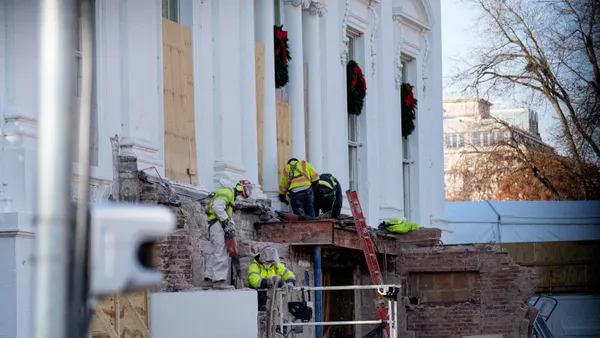Dive Brief:
- United States and Canadian officials said that after 100 days of "intense engagement," the two countries have not been able to agree on the terms for a new softwood lumber agreement, with "significant differences" remaining between them, the Engineering News-Record reported.
- Canadian exports to the U.S. total 28% of the U.S. softwood market — $4.6 billion in 2015 — and the countries are now operating under a one-year moratorium period, as the most recent trade agreement expired in October 2015.
- According to the National Association of Home Builders, the U.S. proposed a four-year phased reduction in Canadian softwood exports to a share of 22% of the U.S. market, but the Canadians want an extension of the previous agreement.
Dive Insight:
NAHB CEO Jerry Howard told the ENR that the association would like to see free trade between the two countries and that the same negotiation "fits and starts" resulted in a "disadvantageous" agreement for American consumers, as well as lumber price spikes, 10 years ago.
Under the existing agreement, the U.S. stopped "antidumping and countervailing" duties on Canadian lumber exports into the country and gave back approximately 75% of the $5.3 billion in duties collected from Canada since 2002. When prices of softwood lumber — which is a vital product in residential construction — fell below certain benchmarks, Canada agreed to impose charges and set limits on what it sent to the U.S.
In an effort to boost the U.S. lumber industry, the U.S. Department of Agriculture and various softwood organizations have promoted cross-laminated timber (CLT) as an alternative to steel and concrete for high-rises and other types of buildings that have normally eschewed the use of wood.
To further that goal, the Softwood Lumber Board and Binational Softwood Lumber Council, in conjunction with the USDA, sponsored the Tall Wood Building Competition last year, which awarded $1.5 million to two winning teams from Portland, OR, and New York City so that the teams could further develop their winning all-wood high-rise designs. According to the USDA, only 5% to 15% of nonresidential buildings currently use wood products in their construction, but the agency said an uptick in use has the potential to create hundreds of thousands of jobs in U.S. lumber communities.












